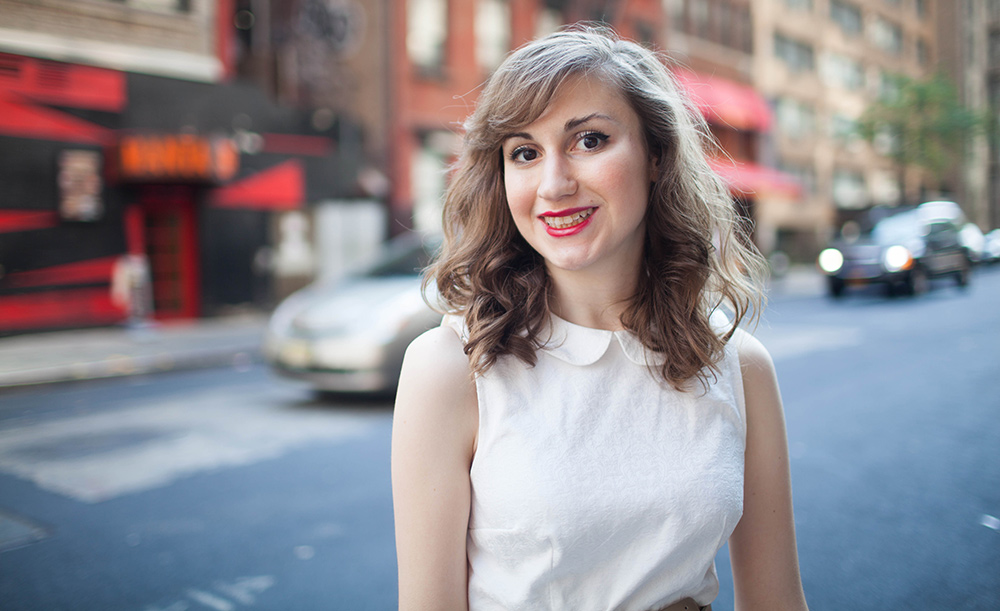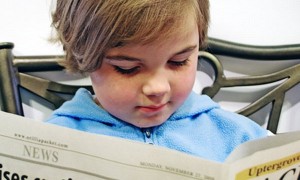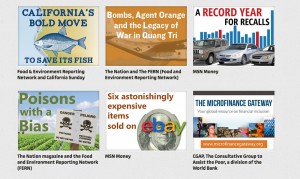Elle.com editorial assistant Alyssa Bailey always knew she wanted to work in magazines. A 2012 alumna of the University of North Carolina, Bailey, 23, graduated with a degree in journalism and French. She started out as a freelance reporter for InStyle before becoming an editorial assistant at Cosmopolitan.com in February. Bailey recently made the switch from Cosmo to Elle. She spoke with American Journalism Review about her career, tips for breaking into the industry and cool events she’s covered on the job. This interview has been condensed and edited.
American Journalism Review: What is your current job title at Elle and what do you do there?
Alyssa Bailey: I’m an editorial assistant at Elle.com. …. [Every morning,] I do news blogging. Us Weekly will report what happened at a talk show last night, and we’ll take that and blog that for Elle.com. Then I’ll pitch longer features and do reporting for that. …. I’ll go out and do interviews. I got red carpet experience from my first job out of college. I do web production. I also help out with social: Twitter, Facebook and Google Plus. I write the tweets and schedule content; I try to put my hand in everything there.
AJR: What is your typical day like as an editorial assistant? What are your hours?
Bailey: I get up at 5:45 a.m. I’m a jogger – every other day I go for an hour run in Central Park, usually from 6 to 7 a.m. I get home. I start my day from home news blogging and then go into the office after. In the mornings, we put up four news stories. I write one or two of them. I’ll [also] work on features, I’ll do production work, occasionally I’ll cover an event. It’s hard to predict what a day would be. I work 50 hours a week. I’m always on call if something breaks. During the week, my life is Elle. It’s great though, it’s fun. If I’m going to have my life be 80 percent work, I’m glad it’s something I adore.
AJR: How many internships did you have while in college, and what did you learn from them?
Bailey: I did six internships before I graduated. My internships made me more confident, more self-assured. My internships gave me the basics. They were more helpful than a lot of my journalism classes. I became more confident interviewing and writing and researching. In New York, I did editorial internships on the print side (I did two — Cosmo and ELLE). I did a lot of transcriptions, a lot of research. Even having a byline, period, gave me an appreciation. I learned something from everything I did.
AJR: Any advice for how interns can stand out once they land an internship?
Bailey: First of all, do informational interviews. If you have an editor you like working with, ask them to get coffee and pick their brain. Find out what they did and take interest in their career. You can learn a lot from their careers. Take advantage of that. That gives you a personal tie to them. When they’re personally invested in you, that’s when people are going to say, ‘I remember that girl.’
Always do things early. Read instructions closely. Don’t rush through any tasks. If you hate transcribing, put everything into it. You want whatever they report to be accurate.
People who follow up, people who meet deadlines, people who ask smart questions … are the ones who do well. Follow up when you leave. Don’t forget about the people you worked with. Send me that really great article you wrote. It’s a reminder why it’s so fulfilling to do what we do every day. Your editors aren’t going to be annoyed, they’ll be glad you reminded them you exist.
AJR: What changes have you noticed in the magazine industry?
Bailey: There’s a print edition deciding [its] place in the midst of all this media. It’s an exciting time to be on the web side of the media.
AJR: Do you have any tips for taking edit tests? What do you think the hiring managers are looking for [in these writing tests given for many magazine job interviews?]
Bailey: Read the magazine. … Know the voice, know the audience. They have a press kit, so you can know who their audience is. Always go above what they ask. If they ask for 10 story ideas, go a little bit above that. Have someone read it, have someone edit it. Ask someone in the industry. It’s not cheating. Take your time with it. Be creative and original, and know your product. Put your best effort in. Do what you’re passionate about and live boldly. The people who take the time are the people who make it.
AJR: What kind of clothes do you typically wear to work? How did you transition your personal fashion style from college to working in the fashion industry?
Bailey: I like the idea of picking a unique outfit every day. I prefer skirts over dresses – more options. My work wardrobe and my play wardrobe are basically the same. I’m going to buy cute stuff I can wear to work and wear out. I really like dressing up a lot and I have a lot of fun with it. I never even touched a pair of sweats. In college, I’d buy investment pieces. Invest in your work wardrobe: things you can multitask with. A statement necklace can take up your style. You don’t have to wear designer clothes to look nice. No one’s going to know what designer you’re wearing. If you look stylish, you’ll get compliments. I admire people who put together a great outfit. Draw inspiration from your editors.
AJR: Where do you think your career will go from here?
Bailey: I never thought I’d be where I am today. I gave up on trying to do a five-year plan. I don’t know. It depends on where my talents lead me. In college I would be terrified of interviewing. Now I do it, I love it. I hope I’m still in magazines.
Clarification: This story was updated to reflect a more detailed description of Bailey’s internship experience and job duties as an editorial assistant.









Leave a Comment